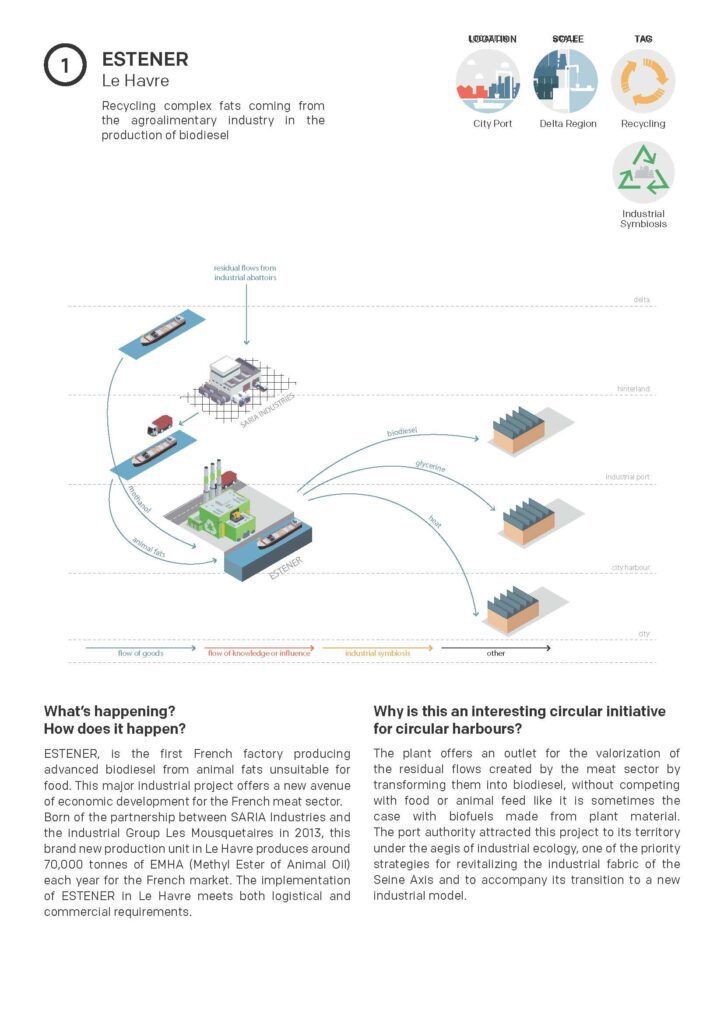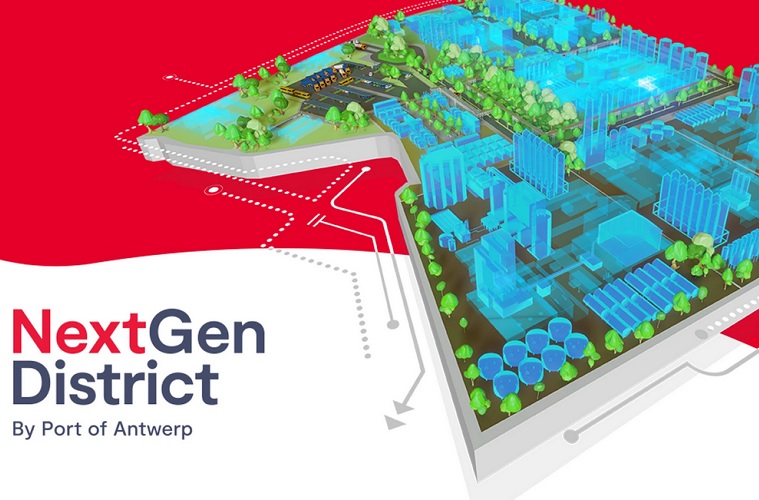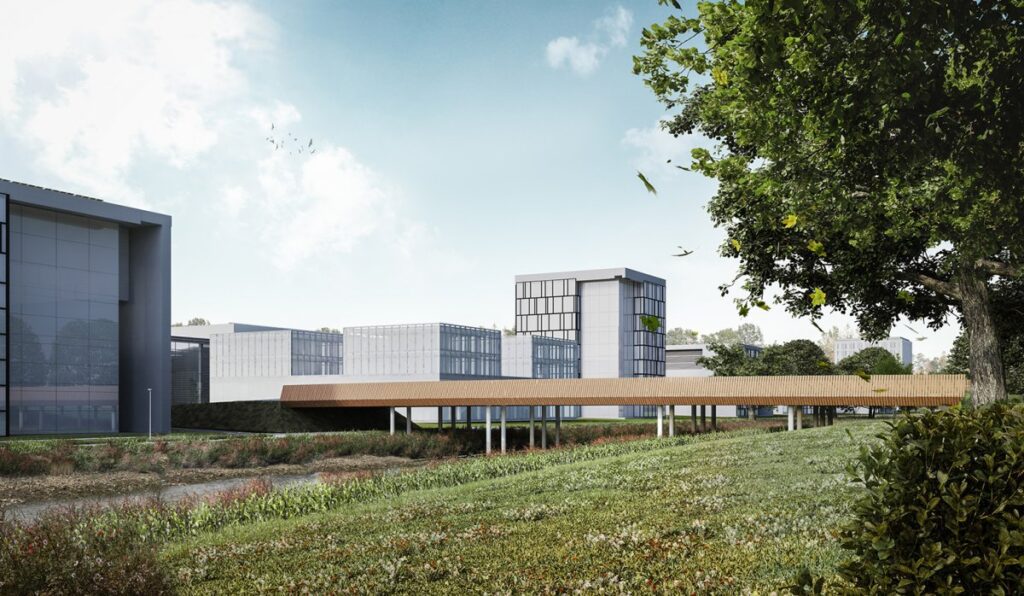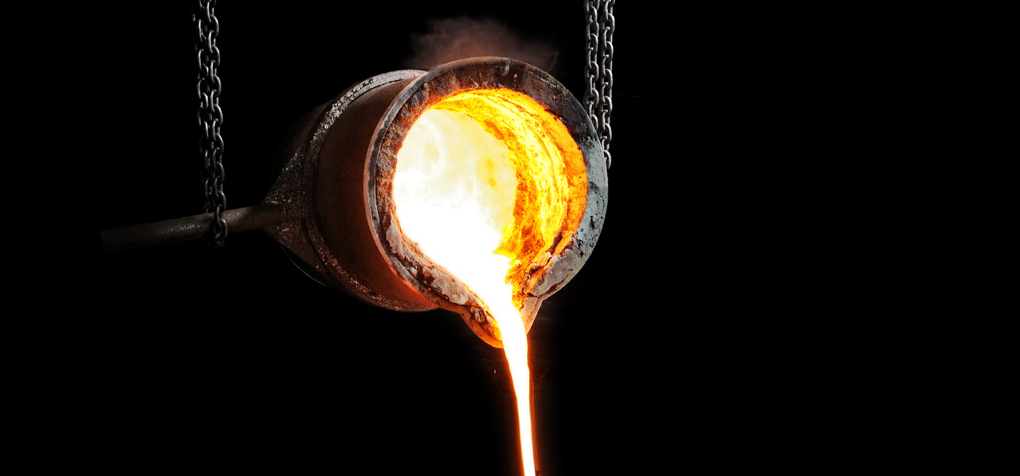Recycling complex fats coming from the agro-alimentary industry in the production of biodiesel
What’s happening? How does it happen?
ESTENER, is the first French factory producing advanced biodiesel from animal fats unsuitable for food. This major industrial project offers a new avenue of economic development for the French meat sector. Born of the partnership between SARIA Industries and the industrial Group Les Mousquetaires in 2013, this brand new production unit in Le Havre produces around 70,000 tonnes of EMHA (Methyl Ester of Animal Oil) each year for the French market. The implementation of ESTENER in Le Havre meets both logistical and commercial requirements.
Why is this an interesting circular initiative for ports?
The plant offers an outlet for the valorization of the residual flows created by the meat sector by transforming them into biodiesel, without competing with food or animal feed like it is sometimes the case with biofuels made from plant material. The port authority attracted this project to its territory under the aegis of industrial ecology, one of the priority strategies for revitalizing the industrial fabric of the Seine Axis and to accompany its transition to a new industrial model.
What is the relation with the port and water?
The plant is a multimodal platform for incoming (methanol and animal fats) and outgoing flows (namely biodiesel and glycerine) by sea, river, and truck, which implies a big spatial outreach. This establishment within the industrial fabric of Le Havre and its harbor allows ESTENER to benefit from significant synergies for the use of piers but also for the sharing of means of protection against fires and the use of local hazardous waste incinerators.
What is the relation with the city?
This major industrial initiative is one of the flagship projects of the Grand Maritime Port of The Havre (GPMH), next to SEDIBEX (heat network for the industry), OSILUB (motor oil recycling plant) and BIOSYNERGY (biomass plant). The fact of relying on the principles of the industrial ecology to guide all new port developments is rooted in a more general environmental strategy to reduce the ecological footprint of the activities of the area, but also to cope with the land pressure resulting from its growth and the poor social acceptability that port activities enjoy among the local population.
What are the ambitions?
With this project, the port authority initiated a series of concrete experiments after a first period during which it conducted several flow material analysis contributing to generate a good knowledge of the global metabolism of the area and the development of a shared understanding of industrial ecology opportunities among the companies based there. The scale of those experiments was the industrial port area first to later encompass the scale of the river corridor (HAROPA) and the estuary of the Seine.
Who is behind it?
The partners behind ESTENER are:
- SVA Jan Rozé, one of today’s leading operators in the French meat industry, owning slaughtering premises all over the French inland territory, and affiliated with the Les Mousquetaires Group
- Les Mousquetaires, a privately owned retailing symbol group based in France and operating internationally in many retail sectors (Intermarché, Bricorama, etc.)
- SARIA Industries -part of the SARIA division of the Rethmann Group, a global logistics and environmental company headquartered in Selm, Germany. Only in France, SARIA transforms more than 1,500,000 tons per year of biowaste and by-products from livestock and meat industries.




